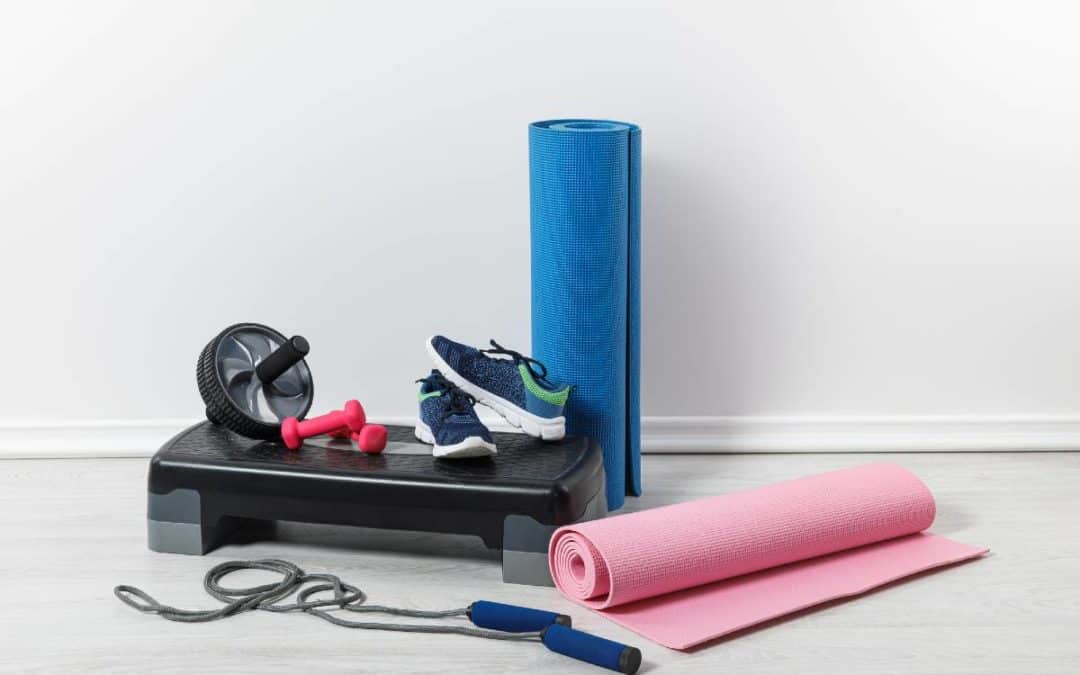Lockdown Workouts – Staying Active at Home
Today marks the start of a second UK lockdown. While the rules look a little different this time around, we’re still coping with closures of gyms, fitness centres, public leisure facilities and group training activities. So I wanted to look at simple lockdown workouts that can be done at home.
Managing this sort of situation is all about having a strategy to deal with it – and working out what you can do, as opposed to focusing on what you can’t!
Here are some of the essential lockdown workouts and exercises you can do from home to keep moving, with zero equipment and in your own time.
1. Squats
Have you ever seen a kid do a squat? They have natural dexterity and balance that we can all aspire to as adults – especially when our joints start creaking a little!
This sort of movement doesn’t just work on your leg strength but is a compound exercise where you use your core for stability with the largest muscle chains all working together.
Squats are a great exercise, and you can build up reps, use resistance bands, or hold any object to make it a little more challenging if you want to ramp up the intensity.
-
- Stand with your feet shoulder-width apart.
- Hinge at the hips, keeping your back straight and your head up.
- Engage your core by keeping your stomach tight and your feet flat on the floor.
- Push your glutes back, and bend downwards, aiming to keep your weight in the middle of your feet, and to squat as low as you can.
Squats are an ideal workout option since you can go at your own pace, and be flexible about adaptations. Try pause squats, holding the position for three seconds at the bottom for an extra burn, or sumo squats with your feet in a wider stance to work on different muscle groups.
We hear a lot about ‘ass to grass’ or going parallel (where the tops of your thighs are parallel to the ground) – and yes, a deeper squat is great.
But if you don’t have good hip mobility, you can still practise shallower squats without any equipment, for low-impact home lockdown workouts.
2. Press Ups
Press-ups are another simple, no-equipment exercise you can do anywhere – and there’s a reason this traditional movement remains a fundamental part of bodyweight training!
This exercise primarily improves upper body strength and works on your pecs, shoulders and triceps all at once.
Keep your stomach tight, and you also work your lower back and core – even more bang for your buck. That is called full body activation, and much like a squat means that you stretch your muscles, and improve flexibility as well as working on strength.
-
- Place your hands flat to the floor, a little wider than your shoulders.
- Balance on the tips of your toes, with your arms and legs braced straight.
- Lower yourself to the floor, ideally touching it with your nose or chest.
- Push yourself back up to the starting position.
You can build in a huge amount of variety with this movement to adapt it to your abilities, or make it tougher!
Try starting on your knees rather than your toes to scale your push-ups, pause at the bottom for added intensity, try out different hand placements, or even balance a book on your back to see just how great your stability is getting.
3. Plank
Planks are one of those exercises that look deceptively easy! It’s a lot like yoga, where an experienced person makes it look effortless, but even a 30-second plank can feel like a concerted effort.
The plank pose is actually a yoga move (called a plank pose) as well as a mainstay of bodyweight training and is incredibly useful for your fitness in so many ways. You might see a plank as a core exercise, but they work your shoulders, biceps, arms and thighs all at the same time.
-
- Start like a push-up, with your hands flat on the floor, underneath your shoulders just a little wider.
- Balance on your toes, and squeeze your glutes and core to form a solid ‘plank’.
- Keep your eyes facing the floor a little in front of you to avoid straining your neck.
- Hold the position – for as long as you can!
Again, this is an entirely adaptable movement.
You can practise 20-second planks in sets, with a rest in between each movement. Alternatively, you can:
-
- Try longer planks, holding it for a more extended time each day.
- Plank on your forearms rather than your palms, or your knees rather than tiptoes as a variation.
- Practise side planks, where you balance on one hand, with your feet stacked on top of each other to activate your obliques.
- Add a ball or object to balance your hands on for a more challenging movement (make sure it’s not going to wobble!).
- Plank on one foot at a time, or add in toe taps to ramp up the intensity.
4. Burpees
If there is one bodyweight exercise that I can guarantee my clients will always groan about, it’s a good old burpee!
The reason for the groaning?
They’re hard, and they’re meant to be!
Burpees are a highly effective cardio movement, again needing little space and no equipment at all.
This is a perfect exercise if you want to build up a sweat and maintain your cardio fitness, but aren’t keen (or aren’t able) to go out running, walking or cycling.
They work on your endurance, exercise your whole body, and build muscle strength while using your legs, arms, shoulders, and core.
-
- Start standing tall, arms by your sides, feet shoulder-width apart.
- Bend down into a squat, placing your hands flat on the floor in front of you.
- Kick your feet back in a ‘bunny hop’, so that you are in a press-up position.
- Lower yourself down to the floor, to complete a press-up.
- Jump your feet back in, close to your hands, keeping your palms on the floor.
- The jump in the air – a clap above your head is optional, and helps get that explosiveness you need for a great jump!
A burpee is like a squat, press up, jumping jack and squat jump all combined, so don’t be surprised if just ten leave you feeling out of breath – this is the superhero of bodyweight fitness.
Like all of these movements, you can change up your burpees to suit you.
For a more comfortable option, skip the press up – reach the plank position before jumping your feet back in. You can also cut out the jump and simply stand back up to your starting position.
To make it harder, speed up! Add more reps, jump over an object instead of straight into the air, use a ball or object to balance your palms on for the press up, or cut back on your rest time in between sets.
5. Walk Outs
Last but not least, add some walkouts into your lockdown workouts.
You can take these at your own pace, and use it as a warm-up or cool down movement by focusing on the stretch or add them into a high-intensity workout at a fast pace against a stopwatch as a core part of your training.
This exercise is another multi-purpose movement and works on your abs, shoulders and balance.
-
- Begin with your feet at shoulder-width, standing in a neutral position.
- Bend at your hips, keeping your knees straight, until you touch the floor with your palms.
- Walk forward on your palms, keeping your feet flat on the floor, until you reach a plank position.
- Pause there, and then walk your hands back again towards your feet, until your legs are straight, with your palms touching the floor.
- Stand back up straight, and repeat!
Another versatile movement, you can add in a push up at the bottom of the plank to add difficulty.
Adaptations include bending your knees as much as you need to, to be able to place your hands flat on the floor, or going down to a kneeling position rather than on your tiptoes, and walking out from there.
Why Routine is Essential for Healthy Lockdown Workouts
When the world goes sideways, it’s so easy to feel like your routine, progress and fitness can’t possibly keep up – but having a schedule, and sticking to it, is essential not just from a physical fitness perspective, but also for your mental health.
If you train three times a week on Monday, Wednesday and Friday – keep it up!
There are so many benefits to getting your mindset right and establishing a manageable routine:
-
- You keep on top of your health, and while it’s not a great idea to set yourself crazy targets when training from home, you still get those endorphin boosts and the satisfaction of having looked after yourself.
- Your body doesn’t experience a sense of shock – either if you suddenly become inactive, or when you do get back to the gym. Having a full month off is a whole different ball game than slowly getting back into training when you’ve put effort into maintenance during lockdown!
- You keep up with your healthy habits. Maybe it’s tempting to give up a little, but if you lose your routine, you lose those habits and good decision-making skills that keep you on track. Try to stay active as you would usually, even if those workouts look a little different.
Committing to your health and fitness is a year-round sport – and if you have spent months working hard, eating right and getting plenty of sleep, now is not the time to forget that focus and progress, putting yourself right back to square one once lockdown is over.
These exercises are all about functional fitness and keeping your body moving without needing any equipment or resources.
Write in your diary which days you are going to work out, and at what time. Then write down the activity, using any combination of these bodyweight exercises, and you’re setting yourself up for the best outcome to keep your head right and your body healthy.
Struggling to find the motivation to exercise from home, or want help with putting together a workout plan to keep your fitness on track? Check out my online coaching packages as another option.
Let’s stay focused, stay positive, and stay committed!

